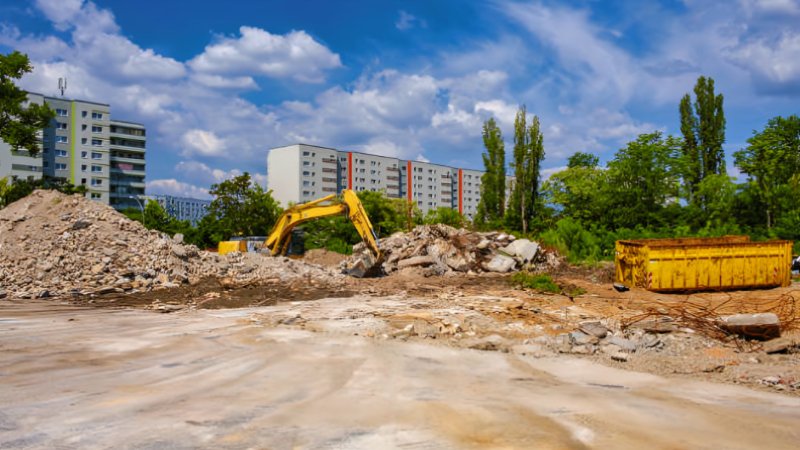When planning a new construction project, it’s tempting to rush straight to the building phase. However, preparing your land with a proper site clear-out can make the difference between a smooth, successful project and one that is plagued by unexpected setbacks. Too often, eager builders overlook this fundamental stage, risking project holdups and safety violations.
From clearing dense vegetation to removing potential hazards, comprehensive site prep is essential. For properties that have serious problems or safety concerns, choosing professional demolition services ensures your build starts with a clean and stable foundation, ready to withstand the demands of construction and long-term occupancy.
Ignoring important site preparation can cause problems with the building’s structure, legal troubles, and expensive delays—issues that can be avoided with a professional evaluation and a customized clearing plan. You can only safeguard your investment from the outset with proper groundwork.
Read on to understand if your land may need professional intervention before breaking ground, as being proactive is the key to avoiding preventable challenges throughout the build.
Overgrown Vegetation
Unmanaged trees, shrubs, and invasive plants can damage property and obscure hazards such as rocks, holes, and wildlife, leading to unsafe conditions and hindering surveys. Overgrowth may delay projects, but experts employ specialized machinery to remove stubborn roots and inhibit regrowth, helping keep them on track.
Managing excess vegetation also reduces the risk of fires and pest infestations, which can cause long-term problems after construction. Ignoring these issues increases the chances of infestations and wildfires, particularly in dry regions.
Overgrown vegetation provides habitats for pests that threaten safety and property. Professional clearing minimizes delays caused by pest and fire risks, resulting in safer and more efficient construction processes.
Uneven or Rocky Terrain
Foundation failures are expensive and often result from uneven ground or rocky soils. If not adequately addressed beforehand, building on sloped, rutted, or rocky terrain can lead to long-term problems. Such conditions can interfere with water flow, lead to instability, and put stress on the foundation, causing cracks or settlement.
If your land has slopes, erosion, or large rocks, professional leveling and removal are crucial to protect your project. Experts utilize advanced equipment to create a flat, stable surface, preventing future issues and reducing repair costs. Site grading and rock removal enhance drainage, improve landscaping, and facilitate safer utility installation.
Professionals may also suggest solutions, such as retaining walls or additional fill, which can enhance your property’s value and stability.
Poor Drainage and Erosion
Standing water, muddy patches, and soil erosion indicate poor drainage, which can lead to foundation damage and instability. Water pooling indicates soil weakness, mold, and potential water intrusion. Experts assess the terrain to develop solutions, such as grading and drainage, to direct water away and ensure stability.
Proper drainage protects your investment during and after construction. Ignoring issues can disrupt landscaping, driveways, and neighboring properties, causing liability. Addressing problems early with professionals ensures a strong foundation and a smooth project.
Limited Site Access
An accessible and well-maintained site is crucial for a smooth construction process. Obstructions, such as trees, fences, or debris, can cause delays of hours or days, increase safety risks, and complicate logistics, even on small projects. Establishing stable access routes and clearing obstacles enhances workflow, minimizes hazards, and accelerates building processes.
Convenient access facilitates rapid responses to emergencies or weather changes, with professionals planning the routes according to the project scope to ensure safe and continuous movement. This proactive approach enhances productivity and reduces costs.
Presence of Hazardous Materials
Construction crews frequently face hazards such as asbestos, lead, or contaminated soil resulting from previous site use or illegal dumping. Building on these sites poses risks to occupants and may violate regulations, potentially leading to shutdowns, fines, or costly cleanup efforts.
Professional site clearing services can detect, remove, and properly dispose of such hazards in accordance with EPA standards, ensuring safety and compliance before construction. Addressing these hazards early helps avoid costly or invasive corrections later, thereby reducing health risks and costs and supporting the safe progression of projects.
Conclusion
Recognizing and tackling five warning signs before construction starts is essential for success. Getting professional assistance early—covering vegetation, terrain, drainage, hazardous materials, or site access—helps ensure smooth progress and long-term results.
Expert site clearing ensures safety, adheres to environmental standards, and safeguards your future construction. Avoid setbacks that could delay your project—think of professional site clearing as the essential groundwork for success.
See Also: Is Climate Change Quietly Making Septic Systems Less Reliable?
